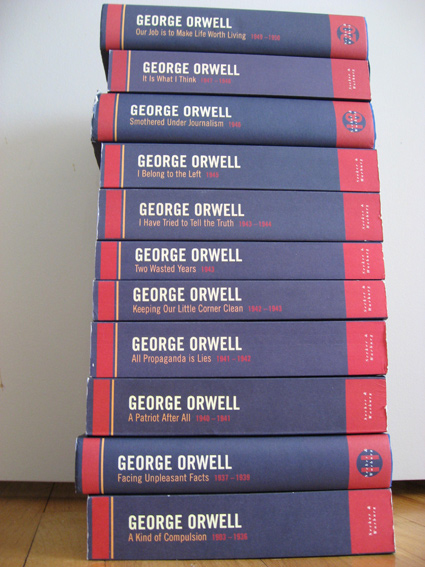Oh, sure, I know you all think it’s easy being me. I know how you envy the dashing, romantic, debonair life of a pharmaceutical trade magazine editor who lives in a quiet, no-restaurant town a little beyond the suburbs. But it’s not all wine and roses, I tellya!
Take today, for example. Last night, I crashed at a friend’s apartment on 13th St. so I could get to an 8:30am presentation at the Waldorf. No problem, except that the presentation went on till noon with a short coffee break. That ran out of coffee. So I grabbed some scorched Starbucks in the lobby and figured I’d get something to eat on the way back down to the garage where I’d parked the night before.
Unfortunately, it was awfully cold out, and I’d forgotten that there aren’t any restaurants up around the Waldorf. I figured I’d pass on the street-meat kiosk, since I wouldn’t have anywhere to sit down and eat, and caught a cab down to 13th St.
Perhaps I was getting a little punchy with hunger, but I thought, “Well, as long as I’m in the area, I may as well stop in at the Strand on the way back to the car.”
And that’s where my troubles began.
See, dear reader, it’s one thing for me to go without food (and with crappy coffee) for a while. It’s another to be in a low blood sugar mode while walking around a giant used bookstore.
Now, I’ve never been a huge fan of the Strand, in part because it’s not a very serendipitous bookstore for me. For some reason, I can’t just meander around, pick something up, and start unspooling creative threads all around the labyrinth of the mythocreative mind. Maybe the shelves are too tall in the sides of the store, or the selections are too extensive. I’m not sure. But I have far greater luck when I go to a place like the Montclair Book Center.
That said, I usually find books to buy at the Strand. I just don’t find inspiration.
So I picked up a bunch of books today, including a collection of journalism about Chechnya by Anna Politkovskaya, some gifts for friends, and a couple of discounted comic collections. I began my trek to the checkout line, resigned to carry both a bag of books and my work-bag (laptop inside) a few blocks along 13th to my friend’s place, where I would pick up my overstuffed overnight bag (Amy stayed last night too, which cut her morning commute from 2 hours to 10 minutes) before walking back down the block to the car.
by Anna Politkovskaya, some gifts for friends, and a couple of discounted comic collections. I began my trek to the checkout line, resigned to carry both a bag of books and my work-bag (laptop inside) a few blocks along 13th to my friend’s place, where I would pick up my overstuffed overnight bag (Amy stayed last night too, which cut her morning commute from 2 hours to 10 minutes) before walking back down the block to the car.
And that’s when I saw it:

Yep: 11 volumes of the 20-volume Complete Works of George Orwell edited by Peter Davison (reviews here). Never released in the U.S., and exorbitantly expensive to order from the UK.
So, minutes later, I found myself slinging my work-bag over my shoulder and hauling 2 enormous bags of books down 13th St. Where the overstuffed overnight bag awaited. Somehow, I got back down the block with all 4 bags; my slanted shoulders were not happy and kept shrugging the non-Strand bags off. But I got to the garage, picked up my car, and figured I’d just get out of NYC and get something to eat back in NJ.
I spent the next 45 minutes sitting in various stages of traffic and regretting that decision. Only two things got me through the trip home: the promise of White Manna and Howard Stern playing an audio clip of David O. Russell flipping out on Lily Tomlin. And $125 in Orwell books. Okay, so maybe it is pretty easy being me. I’ll shut up now.

